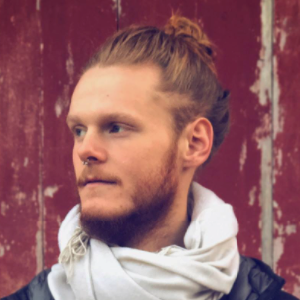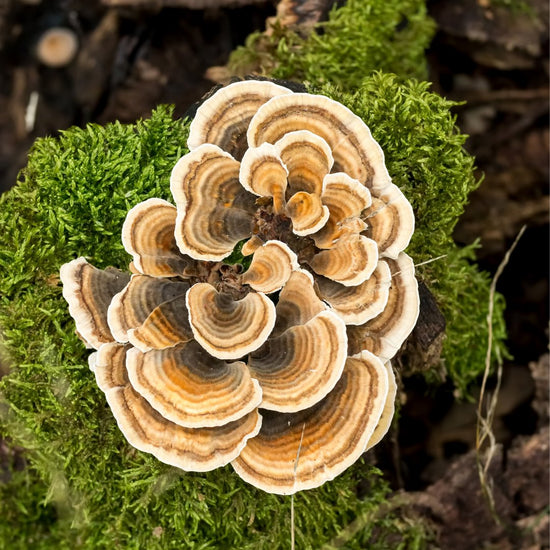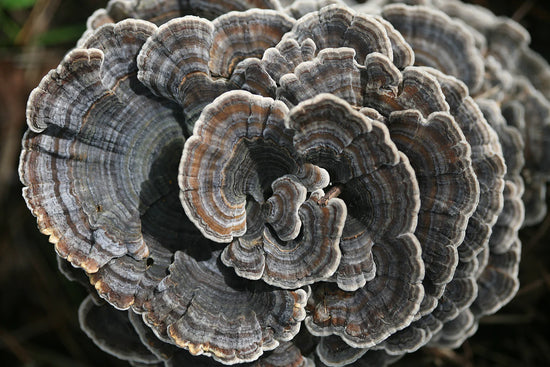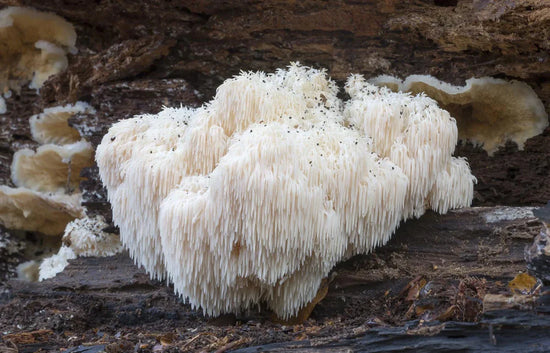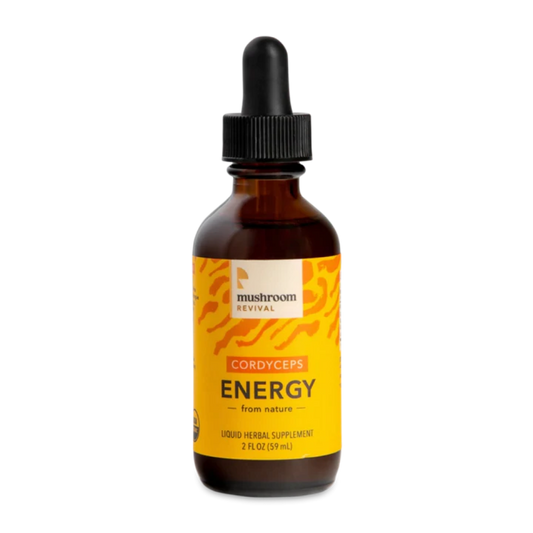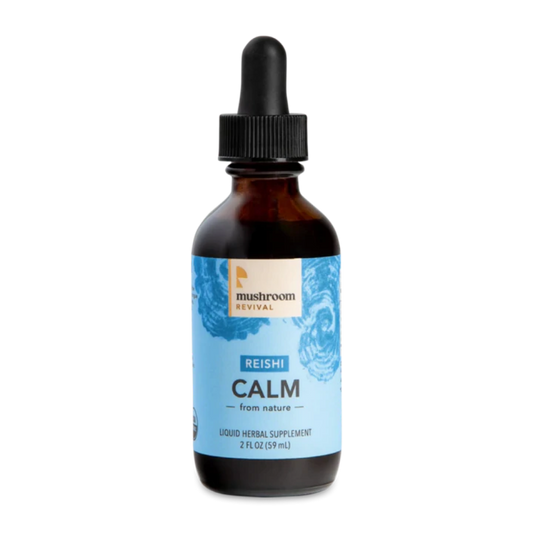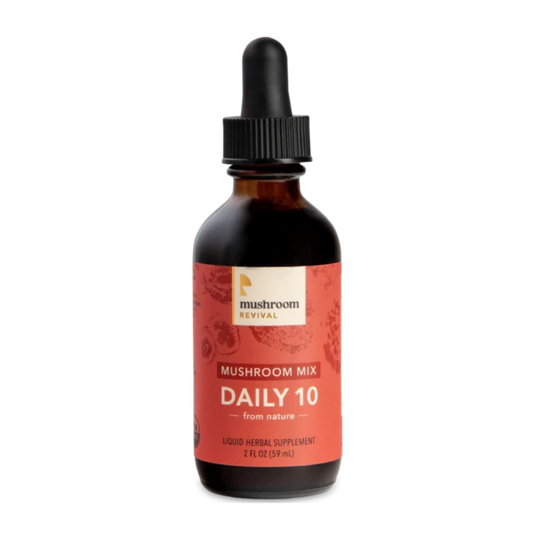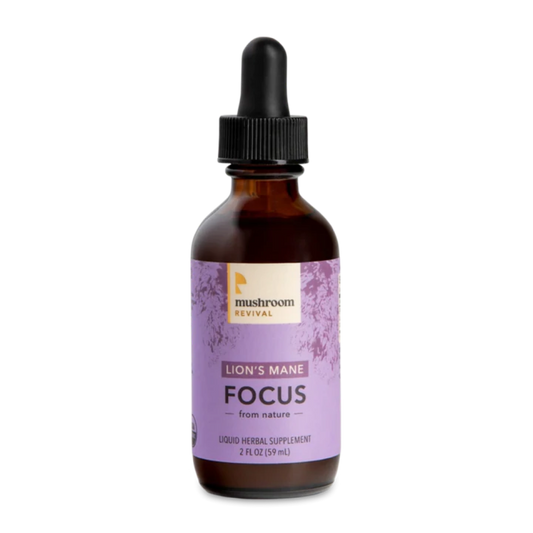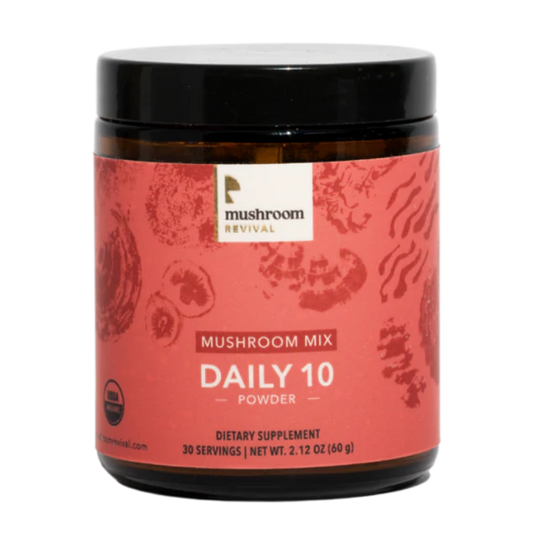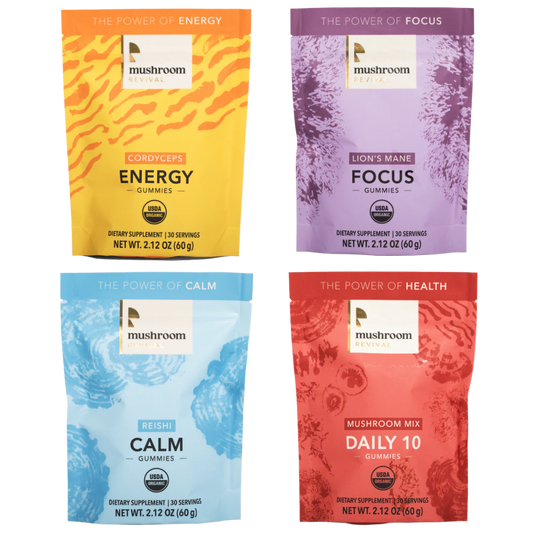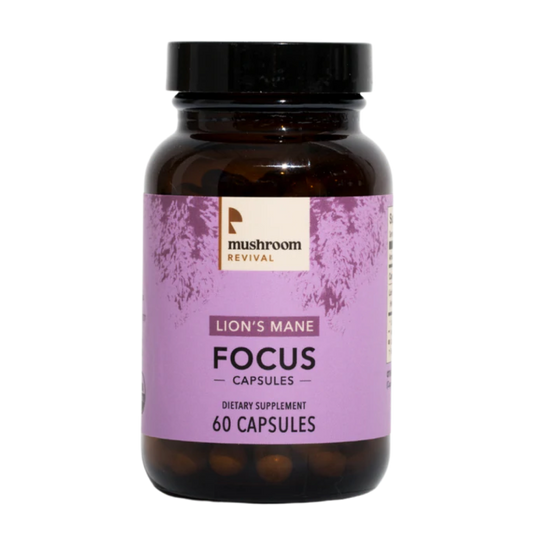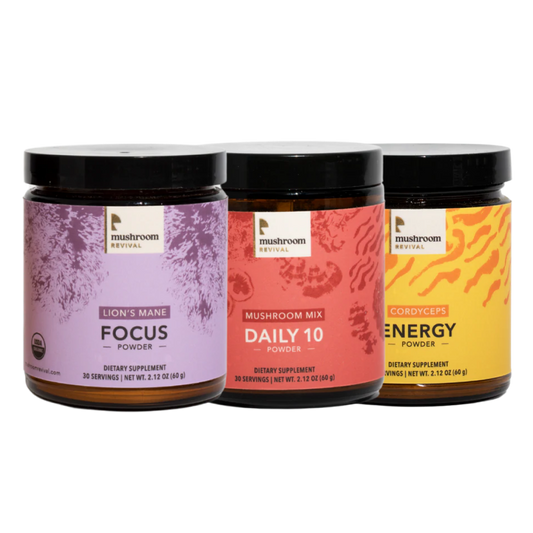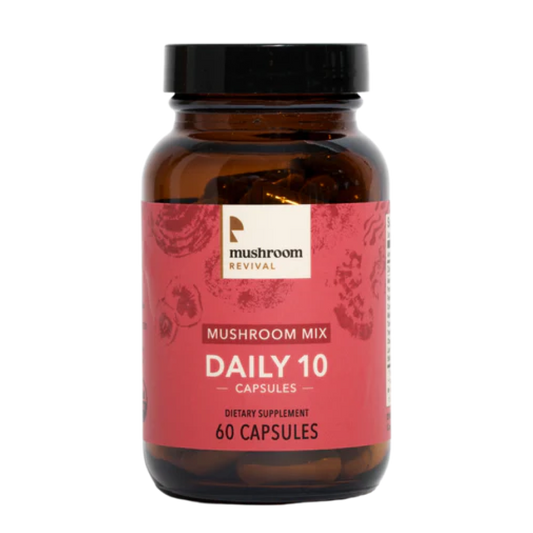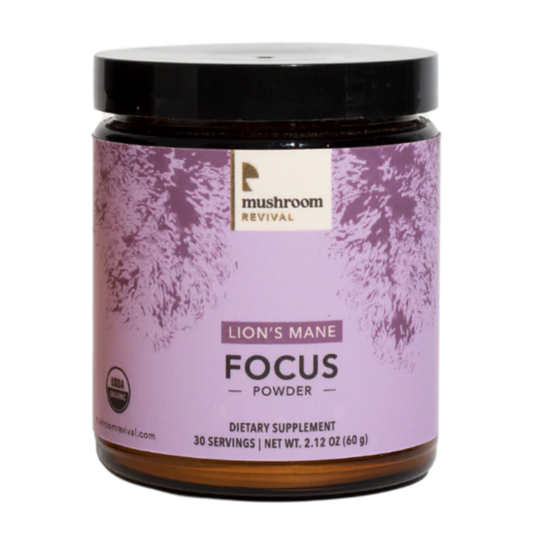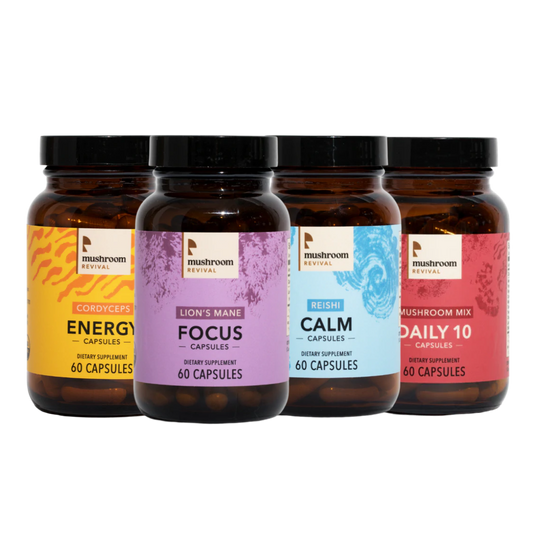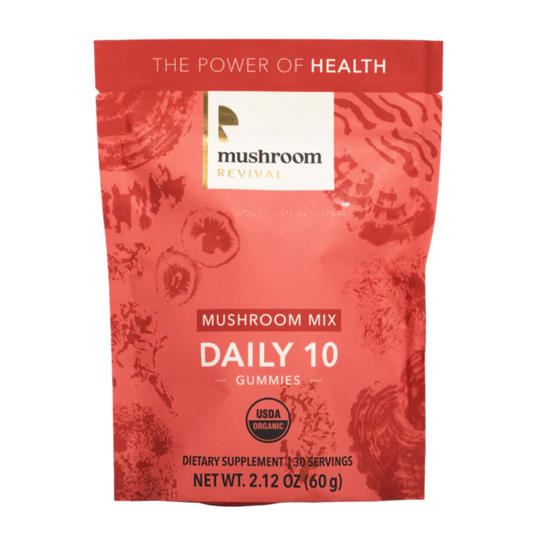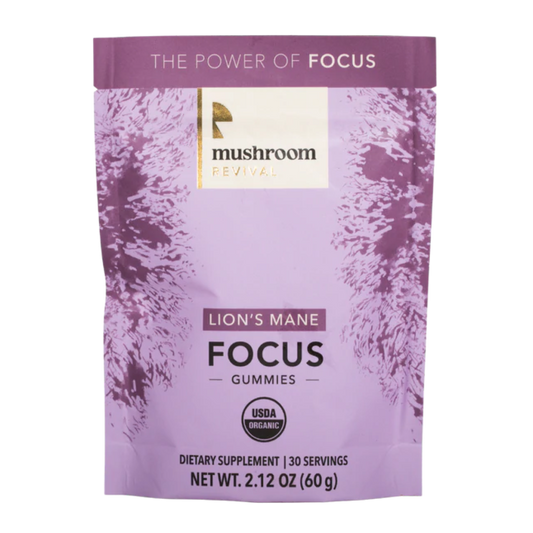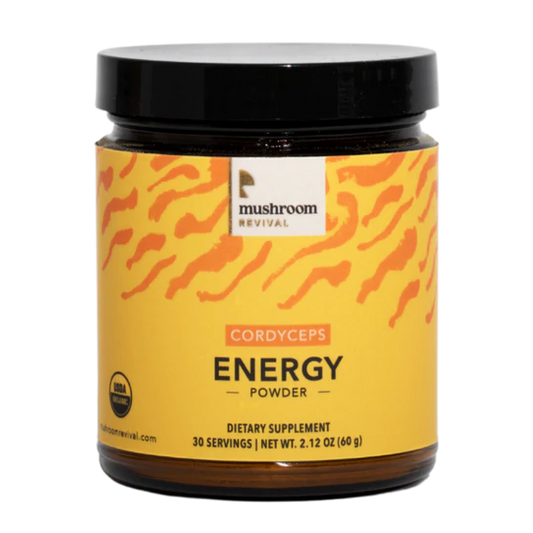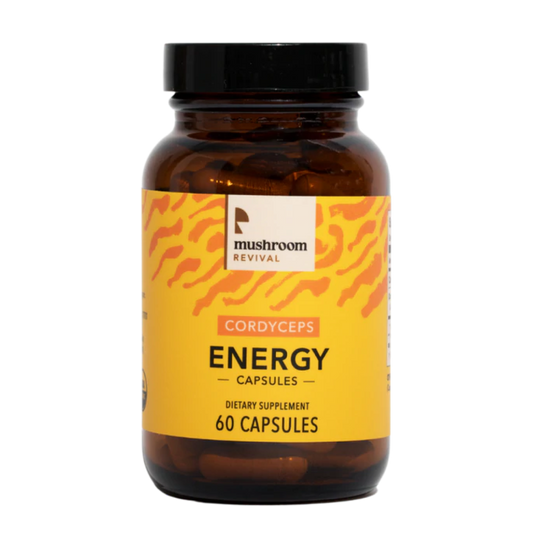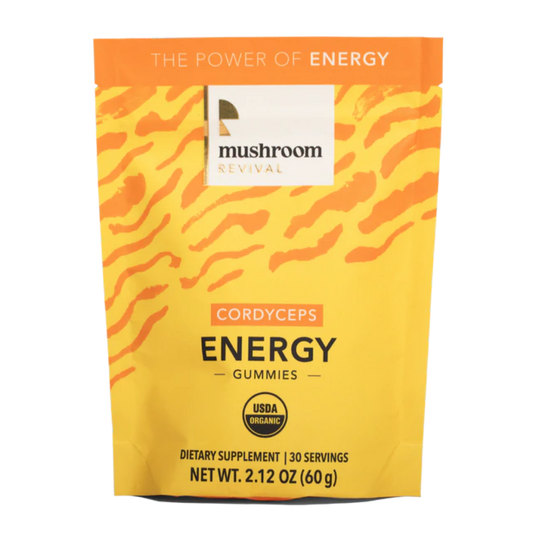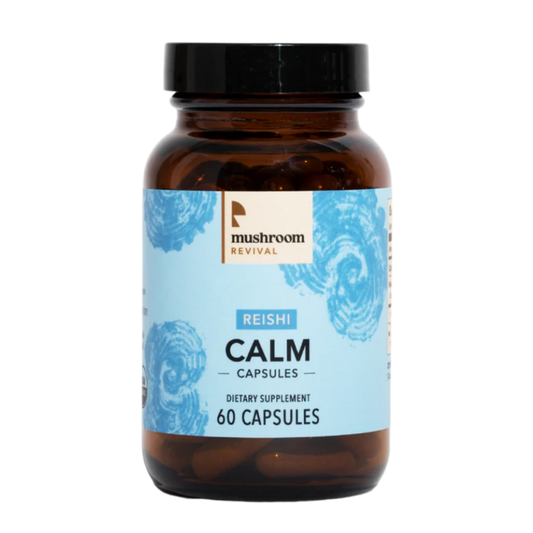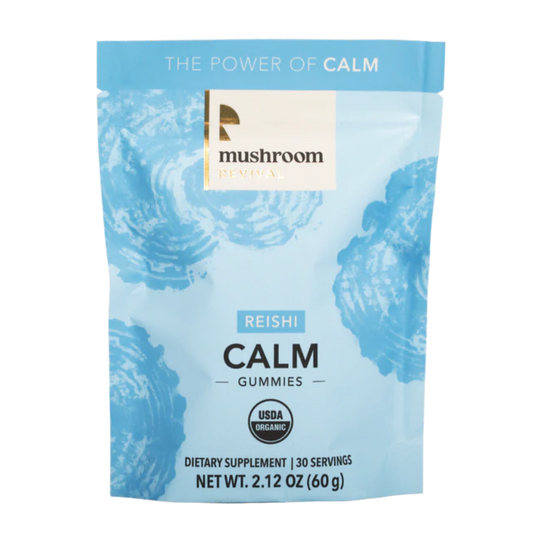Mycopigments: DIY Dyeing with Mushrooms with Alissa Allen
Podcast Topics Covered:
- History of using mushroom dyes and their unexpected applications
- Understanding of mushroom dyes
- DIY natural dyeing with fungi
- Mordanting
- Choosing the right fibers
- Testing dyeing potentials
- Where to ethically find these mushrooms
Alissa Allen and Mycopigments
Make the rainbow by learning how to dye with mushrooms. In today’s episode, we welcome Alissa Allen, the founder of Mycopigments — a platform dedicated to exploring and documenting regional mushroom and lichen dyes.
Alissa is pioneering our understanding of fungal dyes and offers expertise on DIY natural mushrooms dyes. This episode is full of surprising factoids and meaningful stories that any mushroom lover or natural dye enthusiast will value.
 Alissa Allen is the founder of Mycopigments. She grew up in the Pacific Northwest and has been exploring the world of fungi since she was a child. Alissa joined the ranks of amateur mycology in 1999 through the guidance of the Puget Sound Mycological Society. From there she became a mushroom identifier and was introduced to mushroom dyeing.
Alissa Allen is the founder of Mycopigments. She grew up in the Pacific Northwest and has been exploring the world of fungi since she was a child. Alissa joined the ranks of amateur mycology in 1999 through the guidance of the Puget Sound Mycological Society. From there she became a mushroom identifier and was introduced to mushroom dyeing.
Later, she volunteered for five years studying fungal diversity and fruiting cycles at Shadow Lake Bog in Kent, WA. Then, Alissa served as a field assistant for four years working on the production of the book Mushrooms of the Redwood Coast: A Comprehensive Guide to the Fungi of Coastal Northern California by Christian Schwarz and Noah Siegel.
After so much time in the field, Alissa discovered a new mushroom species. The fungus is named after her: Pouzarella alissae. Though she loves fiber arts, her true passion is with fungi and the Earth. She wants to get people connected to their environment and the small species many overlook.
In regards to her current work, Alissa has been teaching about mushroom dyeing, identification, and ethical harvesting practices full-time since 2012. She created and curates two vibrant discussion groups, Mushroom and Lichen Dyers United and the Mushroom Dyers Trading Post. These groups have grown into a vibrant community of over 10,000 members (links to groups at the bottom of the blog post!)
Alissa’s Company: Mycopigments
Aside from her community groups, Alissa’s business — Mycopigments — was named after a made-up word. She used it to describe mushroom dyeing when she was just getting started. She later decided to use it as her business name in 2012.

To learn more about Alissa’s business, visit mycopigments.com. On her website, you will find information on dyeing events that she hosts in various regions as well as the International Fungi & Fibre Symposium. Not to mention, you’ll also discover cool stuff about natural dyeing with fungi.
Natural Dyeing with Fungi
What is Mushroom Dye?
In essence, mushroom dye comes down to chemistry. A fungus may or may not contain chemicals that will produce a dye. The ones that do contain chemicals that produce color are similar to the pigmentations found in plants and insects.
In comparison to plants and insects, some mushrooms may have “novel pigments.” It is not always the case that the color of a particular mushroom will produce the same colored dye. So, you’ll have to experiment a lot to see what a fungi strain will produce.
Books on How to Dye with Fungi
Alissa shares how she used the book How to Use Mushrooms for Color by Miriam C. Rice to guide her art. However, she noticed that many of her tests came out different than the text. She realized that she needed to test just about everything to really get to know the fungi, but the book was an excellent starting place.
Another good book to learn about mushroom dye is The Rainbow Beneath My Feet: A Mushroom Dyer’s Field Guide by Arleen and Alan Bessette. This text is accompanied with photographs whereas Rice’s does not have any, but botanical illustrations instead.
Luckily for us, Alissa has been compiling her own work to publish. In the near future, she will be sharing her life’s work about natural dyeing with fungi in her very own book. To stay up-to-date on the release, subscribe to her emailing list on her website mycopigments.com.
Basics: How to Dye with Mushrooms
Natural dyeing with mushrooms can be a very simple process. However, overtime you can implement techniques that make the process more abstract. To begin, you’ll want to understand what kind of fiber materials mushroom dyes can work with.
Fibers
Mushrooms dyes work best with protein fibers as with most natural dyes. Protein fibers include wool and silk. For vegans, you can use alternative fibers like soy silk, but the colors don’t stick as well. Further, cotton, linen, hemp, and cellulose do not take dyes well without treatment. And alternatively, nylon is a synthetic fiber that takes the dyes very nicely.
Mushroom Dyeing
The process of mushroom dyeing is simple. You simmer a mushroom in boiling water for an hour to extract any dye. After that, you’ll place your fiber material into the water and simmer for another hour.
For more creative complexity, you can modify the pigmentation by using “mineral salts, like alum and iron mordant.” Not only that, but you can modify the color by adjusting the pH. To do this, use a solvent to shift the colors. This process is similar to using litmus paper.
“Each mushroom has its own chemical profile… The dyes respond very differently from species to species or genus to genus or dye type to dye type.”
— Alissa
When you’re done playing with the colors, you’re able to reuse the dye liquid. This practice is also known as consequent dying, exhaust dyeing, or exhausting the dye bath. It’s a great way to zero waste your mushroom dyeing project. Simply put, you’ll use the water until there is no more color left. The longer the dyeing liquid is used, the lighter the shades you’ll get down the line.
Mordanting
Another process in the mushroom dye is mordanting. This is when you treat fabric with a mordant, or an inorganic oxide that combines with the dye. Ultimately, it fixes the color into the fiber material better than non-treated fibers. An example of a mordant is a mineral salt. You’ll dissolve the ingredinet into hot water then place the fiber into the bath.
When you pre-mordant a fiber in advance, it simply means that the material is drying with the mineral salts in it. After the cloth is dried, then it is ready to be dyed. Moreover, mordanting is usually an extra day’s work to prepare the cloth before dying. For more intricate mordanting, Alissa states,
“There's a particular ratio that you would use for either iron or alum mordant. For iron, I use a 2% ratio to the weight of the fiber. And for alum use a 15% ratio to the weight of the fiber… It's really all about fiber to substance weight. The amount of water doesn't really matter in any of these equations.”
However, not all mushroom dyes need treated fibers. This is an essential question that you’ll need to ask before dyeing. Will I need to use this dye on treated or untreated fibers? Which gets us to our next point of…
Testing
Alissa shares her mushroom dyeing testing procedure that involves treated and untreated fibers. She uses nine small strands of yarn to produce a colorful range of pigments that the mushroom dye creates.

First, she’ll pre-mordant some fibers with alum, some with iron, and will leave some untreated. Alissa will also test pH and modify it using vinegar, washing soda, ammonia, or even stale urine. There will be one tester that is neutral with just water.
Is it a Good Dye?
So, Alissa shared her testing methods, which determine if a fungi species makes a good dye. However, there is another method to use to find out if you have good mushroom dyes.
If the dye doesn’t hold its color when the material is kept in sunlight then, it’s not a good one. You’ll want the color to stick around on your fibers for a while, “the longer the better,” Alissa says. But just like any other piece of clothing, the color will get lighter when it comes into contact with UV light. Even the most commercial dyes will make a t-shirt fade over time.
Foraging
Stepping into the forest is the first step to becoming a mushroom dyer. When you’re out on the field, you’ll want to ask questions like…
- How old is that fungus?
- What kind of weather has it seen?
- Has it been rainy?
- Has it been dry?
All these questions will help determine what color of dye the mushroom will create. The reason? The age, the weather, and other factors like mineral content in the soil, and beings that disrupt the mushroom’s growth will “either [drive] up the pigments or [take] them down.”
Alissa shares that you don’t need to answer any of these questions — just play! Enjoy your journey in the forest and don’t be afraid to touch mushrooms. They will not make you sick.
Foraging “Rules”
There are some fungi species that are slow-growing and you do not want to interrupt their growth. One example is Umbilicaria americana (AKA Frosted Rock Tripe) — a lichen that grows on rocks. To be sure that you are harvesting ethically, connect with your local mushroom community.
What Does Not Dye
Finally, there are many mushrooms that will not produce a mushroom dye. For example, the small white ones in the backyard are unlikely, or the little brown ones in the compost, and the shelf fungi that are grow on trees and have white undersides. Knowing which mushrooms are unlikely to dye will save you a lot of time.
Natural Dyeing Fungi Species
To learn more about mushrooms and lichen strains that produce dyes, listen to the podcast at these times:
Mushrooms
- 22:10 > Hapalopilus nidulans (AKA Purple Dye Polypore)
- 31:34 > Tapinella atrotomentosa (AKA Velvet Paxillus)
- 36:24 > Phaeolus schweinitzii (AKA Dyer’s Polypore)
Lichen
- 38:08 > Xanthoria parietina (AKA Common Orange Lichen)
- 40:50 > Umbilicaria americana (AKA Frosted Rock Tripe) — slow-growing, harvest with care
Learn More About Natural Dyeing Mushrooms
In the corporate world, there are a lot of chemical dyes that make up a lot of the clothes and cloth materials that we use. Sadly, the chemicals used to produce the color on the fiber materials are not the best for our bodies or the environment.
“The chemical dye world out there is a scary, scary place… If we can start replacing that with more natural [dyes] that would be wonderful.” — Alissa
Alissa hopes to get people to care more about the environment, so she’s sharing her mushroom dyeing techniques with the world. Learn more about how to dye with mushrooms and lichens via the Podcast Resources below. Natural dyeing with fungi will help evolve the corporate chemical dye industry into a natural and eco-friendly one.
Ask Alissa to host a workshop: https://www.mycopigments.com/pages/workshop-types
Micropigments Website: https://www.mycopigments.com/
Mushroom and Lichen Dyers United: https://www.facebook.com/groups/mycopigments/
International Fungi & Fibre Symposium: https://www.mycopigments.com/pages/iffs
Instagram: @mycopigments
Transcript:
Alex 0:22
Welcome welcome mushroom family to another episode of the mushroom revival podcast we are switching to a video component. So if you're tuning in via your headphones or speakers, we do have a video component and this episode that we're about to launch into, you might want to see it on the video version because we're talking about colors and pigments of mushrooms. And this whole podcast the mushroom revival podcast. We are absolutely obsessed with mushrooms, everything mushrooms, we invite guests and experts from all around the world to geek out with us and go on a mushroom journey. And so we're so excited to gear up another episode
Lera 1:07
with the long overdue founder of myco pigments. Alyssa Allen, thank you so much for coming on the show and being willing to share your knowledge about mushroom and like and die.
Alissa 1:18
Thank you for having me. So excited.
Lera 1:20
Do you want to start with telling us how you got into the natural dyes space? And then at what point? Did mushrooms show up? Or if was it mushrooms first and then you found out they could be used as dyes? How did that unravel?
Alissa 1:31
So I got started looking at mushrooms as a little kid, I was lucky enough to have a mom who was very curious about the natural world. And she was 19 when she had me so we kind of grew up together and exploring these things. And so she got her Merson, her first mushroom book in when I was about four and a half. And so we would go out into the woods and look at mushrooms and I grew up with this Audubon mushroom Field Guide. I'm looking at it and I just when I finally learned to read, I was like, I'm very excited about all of the common names like witches butter and dead man's fingers and all this all the exciting raspberry slime. It was just like a treasure hunt going out and looking for these things. And it wasn't until much later that I realized this book has. It's called North American fungi, but it definitely has an East Coast slant. So it wasn't until years later that I met some of these mushrooms for the first time that I had been reading about my whole life. And so it was it was like meeting a celebrity, like climax did on oh my gosh, I know you ever heard about you. So I've been like a mushroom nerd my whole life pretty much. And I just, they're just fascinating to me. I also am really interested in wild edible plants. And so between those two hobbies, it just had me in the forest looking for these treasures. So it wasn't until I was about 20 that I found out there were other people like me, I thought it was just me and my mom. And so I I looked in the newspaper and I found this advertisement for the Puget Sound mycological society's annual mushroom show. And it was just I was like mushroom show very exciting. And one of the lines was black light display. And I was really into blacklight stuff in my 20s. So I was like what black like mushrooms show. So I went to that and it was mind blowing it was there were hundreds and hundreds of different species of mushrooms all collected fresh, and laid out on tables with all these like mushroom elders walking around telling you all about the mushrooms. These are mushrooms that had been seen my whole life, but I just I had never heard anybody else more knowledgeable than my mom and me. So it was like, I just felt like I found my tribe. And I they had free identification classes. I signed up for all of those. I just like really dove into the mushroom identification and myco logical world. And I was so happy to like have have these people to to walk me through it really. And it was at that fair that they had this little tiny display of faded out mushroom dyes. And the display had been around probably for at least 10 years parked in the sun. It was really faded and just kind of even the marker that had written had been written on there was faded. But on the table below where they had placed this display, there were some really bright yarns. And so it piqued my interest. And I had just learned to crochet. So it was like fiber arts and mushroom world and everything just collided at once. And I was able to ask about this and like, just it was just mind boggling. So the person who had done this little brightly colored display at the bottom, which wasn't even to display, it was just some yarn laying there. She had just taught a few people from the mushroom club, about how to do it in the basics of just like, you boil mushrooms with some yarn, and some mushrooms just get bright colors right off the bat. And so I asked her, like, how do I do this, she gave me a little description of how to run through it, some yarn that had been treated with mineral salt, so it was mordanted and ready to go. And she even gave me some dried mushrooms. So I went home, I did it. I got them. Same bright colors. I was so excited. And I have always been like interested in all the mushrooms, not just edibles. Not just like everything. I'm just curious, what are these things? And what are what do I call them. So I was really good at like, finding baskets full of interesting looking mushrooms, where everybody else is out on chantrelle foray I've got this basket full of weird stuff that I'm just curious about. So it turns out like a lot of that weird stuff had di qualities to it. So I just started experimenting with that little bit of information that was given to me. And this was back in like 1999. So it was before social media before email, even I'm like, I might have had an email address, but I never used it. But I didn't. I didn't have like the community to inform me. I just had this one lady in the mushroom club. And so I asked her everything. And she's like, you know what, you've actually done this more than I have. So you're the new club expert. And that's how I became a mushroom dye expert.
Alex 7:11
So can you can you define, you know, for our listeners, what exactly is a mushroom dye or myco pigment? Do all mushrooms have this? Can Can you? Can you use any mushroom for a dye? Is it only a certain kind? And like is it a compound and enzyme? Like what's going on? Why does it make a dye?
Alissa 7:34
Okay, so that was a lot of questions. But I'm not really sure where to start. Um, so myco pigments is a word that I made up to describe mushroom dyeing back in the day that I was getting excited about this. And I used it as my business name in 2012. When I became like official mushroom myco pigments became my business and my like, my passion. So myco pigments is just kind of a made up Word and what but it's used by everybody at this point, which is kind of exciting. But um, so mushroom, mushrooms contain chemistry, chemicals that may or may not produce the dyes. Some the pigments are known the dike chemistry is known, it's shared amongst plants and insects and other things. Other mushrooms have novel pigments that are only found in that particular fungi or only in fungi in general. So you really have to like experiment to see what a mushroom is going to do. So that's what I started doing. I had, I had one book, and that was mushrooms for color. And I just started experimenting and noticing that I'm getting different results than are listed in the book. So then that made me question everything like I can't, I just have to like test everything. And so that's really how I got to know the fungi. I definitely use that book for guidance, but I was able to like kind of break out a little bit from there and learn a little bit more.
Lera 9:18
Yeah, so that's by Mariam C Rice, right mushrooms for color. And then there was one more that she released,
Alissa 9:24
She released a few books. So she her first book was let's try mushrooms for color. And it was just like an invitation for people to experiment. And that's one of the things that really resonates with me with Miriam is that she just encouraged everybody to contribute and to try it and that's the spirit that gap that kind of embraced me when I was getting started. So um, then she has mushrooms for color, which is more of like okay, here's the report on what what we've done. gotten this isn't information that we have to date. So those were really early experimental books. And then Arlene bissette and Alan set came out with Rambo beneath my feet, which was pretty much a combination of Miriam's work and some of our lens experiments. And then photographs, which were Miriam's early works, didn't have photographs. They had beautiful botanical illustrations by Dorothy Beebe, but not a lot in the way of actual photographs of mushrooms. So Arlene and Alan contributed that to the kind of what we know about mushroom dying. And yeah, so there's those are the main books that I use. Miriam did write a final book that was kind of a culmination of her entire exploration throughout her life of mushroom dyes. papermaking, pigment extraction, paint making Kranz myco sticks and such. And that's a good book. But it's, it's so broad that it's not the best for learning to actually experiment with these dyes.
Lera 11:04
Yeah, I discovered that myself, I got that book for as a Christmas gift a few years ago. And I was coming across as a beginner. And just like why this is, this is very vague, I have so many questions, and then eventually got rainbow beneath my feet. And that was a little more comprehensive.
Alissa 11:20
Yeah. And that's the book that I recommend. For now. It's, um, it's got photos, you know, it's definitely it's been around for a while. And it doesn't explore pH modifications, in depth, because Miriam didn't really explore that very much. So there's a lot of a lot of modern changes that have happened since those books came out.
Lera 11:44
And all of this literature seems so recent, like just the past few decades, have we at least in the Western world, been documenting this? Do you happen to know anything about the history of mushroom dyes and where it came from? how long it's been around? Or any anything like that?
Alissa 12:00
My understanding is that there's no archaeological or verbal traditions of using mushrooms for rainbows of color, like we are today. I think people probably used something here and there. I mean, how could you not, but for whatever reason, that was it's either lost or it never was very, like it wasn't matter. Indigo or cochineal, or you know, it wasn't grasped and kept in tradition. So there there's the only mushroom that I know that there's actual literature on being used before Miriam started documenting this stuff is Pisolithus , the dead man's foot, or the dyers, puffball, or the dog turd fungus, has a lot of common names.
Lera 12:53
What color does that one create?
Alissa 12:55
It does brown mostly and different shades of brown. So really bright orange brown to the really dark, like sepia. And I think that the literature, it's like a couple 100 years old, and I forget where it came out of Italy or something.
Lera 13:09
So do you know if there's a purpose behind these pigments in the mushroom? Like why do mushrooms create color? I don't know if you have done any research on this?
Alissa 13:20
Yeah. I don't I don't know that anybody has the answer to that. I think a chemist, like a botanical chemist might know some of the purposes of colorings in plants and whatnot. But as far as I know, I I don't have an answer for that.
Alex 13:38
Yeah. So I do know that ophiocordyceps robertsii was used by Maori people for their tattoos. I'm probably gonna butcher This is tamako tattoos, traditional tattoos. And they they made kind of a dye with that it's not yarn or anything. It's it's kind of body dyeing. But
Alissa 14:05
People ask me all the time, if you can use mushroom pigments for various weird things.
Alex 14:11
I don't I don't know when that started, or how, you know, far back that was. But that's, that's one example. And I think there's some other examples, and I'm any anybody listening? I know, we've done other episodes. And we've had, you know, some historians reach out to us that are more familiar with, like Native American use, or other uses of fungi that date way back that, you know, pulled out these these old manuscripts and we're like, Whoa, awesome. This is great. So if anyone's listening, you have that information, and we're just not aware of it. Please. love to see it. That stuff is juicy.
Lera 14:53
Do people ever ask you like, you can use mushroom pigments for tattoos?
Alissa 14:57
Yes.
Lera 14:58
Do you know if anyone's done it?
Alissa 15:00
Don't think so I think it's, you know, injecting things is scary business. Definitely. People have used them for hair dyes. Wow. Yeah.
Lera 15:13
How did that result?
Alissa 15:14
Well, it's varied results. And so, um, let's talk a little bit about how you actually use a mushroom for dye. And then you can kind of think about how that might apply to one's hair. So mushroom dyes work best on protein fibers. And this is a fact with most natural dyes, you want to use either wool or silk or something with a high protein content. Um, I have seen some alternative fibers used like soy silk, but it's the protein that really binds to that dye. And then also, strangely, nylon takes the dyes really well. So if you're looking for non animal products, those are like the two that I've seen work comparatively well to wool and silk. And for whatever reason, cotton, linen, hemp, the cellulose fibers really don't take the dye that well without treatment. And I'm just so in love with the saturation on wool. And also cells, but mostly will, that I just can't justify using such a precious dye source to make a pastel color on cotton. So I stick with protein fibers. And the basic, like rundown of what you do is really pretty simple. You simply simmer the mushroom in hot water for an hour. This is like the basic, it's totally in real life. There are all sorts of exceptions to this rule. But I'm basically summer the mushroom for an hour to extract the dye. And it's just like tea gets a decoction you pull out those dye pigments. And then you submerse your fiber in there, and you simmer it for another hour. And you can modify those colors by using mineral salts, like alum and iron mordant. And you can also modify the colors with PH modification, either as a solvent to pull out the dye or as a post dye modification to get the colors to shift, kind of like you would litmus paper and different chemists, the each mushroom has its own chemical profile. And the dyes respond very differently from species to species or genus to genus or dye type to dye type.
Lera 17:40
And is that the method you typically use when you come across a new mushroom just to see if it will produce anything?
Alissa 17:47
Yeah, so I have a pretty, it took me a long time to come up with my testing style. But I have a testing style that I use almost every time when I'm encountering a new mushroom. And it requires more density in the fiber. So to mordant, you take this mineral salt, you dissolve it in hot water, you there's a particular ratio that you would use for either iron or alum mordant. For iron, I use a 2% ratio to the weight of the fiber. And for alhama use a 15% ratio to the weight of the fiber. And it's really all about fiber to substance weight, the amount of water doesn't really matter in any of these equations. So for dyeing with mushrooms, you are looking at the weight of the fiber that you're going to die and the weight of the mushroom that you have. So I pre mordant my fiber. And so that just means treating that fiber in advance and letting it dry with the mineral salts in it. And then it's ready to go. So it's another like days process basically, to get the fiber ready. That said, not all mushroom dyes require more dense or are enhanced by more dense. So I also leave some yarn just untreated. And that that's an essential part of it too, because some dyes only respond well with untreated fiber. So you really need to rule out like is this even a dye mushroom? Does it even have dye of any kind in it? Or? And people who know me know that bage doesn't do it for me. So I get a lot of people saying oh this dies and it's like, okay, but it's bad. So I like really bright saturated colors. And that's what I'm looking for. I'm looking for at least some sort of like distinctive color. So I pre mordant the I pre mordant with allem I do some with iron and then I leave some untreated, and I make these little tester bundles that are just about this long, one string. mordanted one that I make a little bit longer with lm and one that I make a little shorter with iron. And then that way, when I pull it out of the out of my diet experiment, I can see which one responds well, so I do that. But then I also test pH extraction during extraction. So I'll have one little I do this in jars in this tiny little kampot have one jar with a pH modified to pH four. So I use a little vinegar to get it to that. And then another jar with a pH modifier of washing soda or ammonia, and that brings the pH up, and you want to keep that pH in check. Because if it gets too alkaline, it can actually destroy your wall, it will just like dissolve it. So you want to keep that in a pH of nine around the pH of nine. And then I just leave one that's just neutral. So just water. And I throw my tester bundles, and all three of those. And by the time I'm done, I have nine samples that are all different colors. And that tells me is this mushroom a good die mushroom? And if so what's the best route to color to maximize the dye potential of this fungus?
Alex 21:16
I have a couple of really amazing forger friends and they use this goes way beyond me. I'm not an expert forger idea in any any capacity I would like to be, but I focused on other things and and they use three chemical reagents 4% KOH or potassium hydroxide 10%, iron sulfate, and dilute ammonia kind of these liquid droppers. And so some mushrooms have what I've told is you can't in the field, you can't macroscopically id them. So you can drop these chemicals on them, it'll change colors. Is that does that have anything to do with knowing the dye that it will produce? Is there any correlation? Have you have you tried this before?
Alissa 22:10
There is a correlation. Yeah, so I, I look at mushrooms too. And I often will carry chemicals like that for ID purposes. There are some mushrooms that I use, like a little drop of ammonia to identify in the field. And it is responding with the diet chemistry. But as in general, that's not going to tell you all the answers that you need to know. And really testing. using that technique that I described is the way to find out if a mushroom is going to give you die. But if you're looking for half a lossless nidulans, which is this tiny little poly pour, that gives us beautiful purple color. It's probably the most coveted dye mushroom out there. It looks like a lot of different little poly pores, it's this this kind of beige thing. But if you drop ammonia on it, it gives you a beautiful purple reaction. And that's the way you identify that mushroom. There's no other mushroom that does that. So in that instance, definitely you're going to be reliant on reagents or you can just recognize it and it's definitely possible to like get to know that mushroom and and recognize it without the chemicals. But if there I wish there was like a quick test that you could just like test a mushroom with a reagent and know if it was a good Dyer or not. But as far as I know, that maybe somebody can like synthesize all the information and bring it down to like, okay, here are the mushrooms that you can do that with.
Lera 23:43
Yeah, I liked how rainbow beneath my feet had a whole database of dye duds. There's so many like hundreds of like, Wow, thanks for all of the time, I would have, you know, wasted trying to extract pigment from all of them.
Alissa 23:58
Yeah, that said though, Arlene didn't experiment too much with PH modification. So some of those I suspect actually do have died. It's just up to us to kind of figure out which ones those are. Right?
Lera 24:12
And are you compiling your experiments anywhere and plan to publish?
Alissa 24:16
Yes, I've been working on a book for some time and I have my standards set really high of what I want, what kind of work I want to put out when it's all said and done. I've had a lot of requests for like pamphlets and you know, identification cards to put on your basket and stuff like that. And I probably could do that. It would make everybody's life a little easier. But I'm really holding out for publishing like a complete body of work.
Alex 24:46
I'm so excited. Yeah. I'm picturing whenever I go like paint a wall or something and house. Go to the paint section and they have kind of that swatch set. Whatever I'm just picturing, like carrying or that around in your foraging basket. Like, do I want blues? Yeah, unfortunately, you have to find the mushrooms. So and then there are so many mushrooms out there, that having like a little handy guide isn't gonna, if it was that easy, then we would just carry around a handy little guide. But we instead we have mushrooms demystified, which is like huge, and it doesn't even have all the mushrooms. Now we're still exploring every day we barely, you know, tapped the surface of all the mushrooms and fungi out there, you know, not just fruiting bodies, but you know, and all the the lichen dies and everything and, and what's under the earth and even I don't know if you can die with mycelium, but it's it's there's a whole we barely scratched the surface, which is so exciting. And I I love how you keep reiterating that we have to play and, and you know, experiment with all these different pH is and temperatures. And I did a Zen kind of art course, interesting collaboration between Zen mindfulness and and also like watercolor art. And it was a beautiful kind of weekend getaway in in, it was in New Hampshire. And this, this Zen monk was also this avid artist, and she was pretty against the use of chemical based paints. And part of the this Zen practice was to discover paints around you. And so using, you know, the tops of dandelion flowers to make a yellow or grass to make a green. And, and people kept coming up to her. And they're like, Well, can we use this and she's like, just play, you know, just experiment. And that's part of the practice to get connected with nature, and to just see all the different possibilities around us. And, you know, one of the craziest ones was rubbing rocks together in like river water to make this like brown different shades of brown. I know you're not like a beige person. But
Alissa 27:23
There's a there's a time and a place for death for neutral colors.
Alex 27:27
I can make paint out of rubbing rocks together, it was unbelievable. I was like, Whoa, my whole, it just changes your perception of the world, you know, around you. And so it's really exciting. And we just posted a mycopigment kind of infographic on our Instagram and people went nuts. And tell me when the next podcast is and you know, any more information on this, let me know. Yeah, so I think when you release your book, people are gonna go nuts. And I'm excited for it. I think it's, it's super valuable information. So thanks for doing that work.
Alissa 28:10
Yeah, this is I mean, I love mushroom dyes, and I love fiber arts, and all of that. But my passion is with fungi and with Earth and like getting people excited about interacting with their environment, giving them connection to the things that they overlook. That is my true passion. And I like there's no greater compliment than somebody coming up to me after class, or a month down the line saying I never noticed how many fungi there are. And now I can't not look. I'm curious about all of them. And that and then seeing that blossom over the years into people actually forging their path and mycology, like the dyes are one thing. And that's fun, and it's beautiful, but it's really just a way to get people to engage and be curious about fungi. And like you said, there's, I mean, we're just barely scratching the surface. Like, I mean, chanterelles. Something that we humans have been consuming for how long they just split those up in the last decade or two. They're still discovering new species, right beneath, like some something that we just take for granted as being identified. chanterelles, like, so it's it's very exciting to see this like, splitting of species we know or we think we know and finding out oh actually that's 10 different species and that complex to just discovering new fungi. And I was really excited and lucky to have discovered a fungus out in the woods that has never been described before. And got it named out. For me it's this little mushroom called Pouzarella alissae. And it was found in under a research permit under Dr. Largent, and, yeah, and so it was very exciting. And I never thought I would find a mushroom that hadn't been identified because, I mean, everybody's been looking at mushrooms for a while now. But it was just this little ephemeral thing that, you know, a couple drops of rain and it's knocked over and gone. It's fast growing, so it doesn't stick around long, and the chances of just that chance encounter coming across it. And I happen to know enough about mushrooms to say, you know, this looks like an inocybe. But something's not quite right. And it kind of looks like this other thing, but it's got pink spores, because I could see that it was pink tinge. And that was enough to like, make me you know, stop pause to collect it.
And you got it sequenced. And that's awesome.
Yeah, yeah, I was with other mycologist who kind of took the the helm from there. But
Lera 31:06
Do you know if it uh, do you know if it produced a die?
Alissa 31:09
No, I don't think so. And it was just a few it was, you know, it would be great if it wasn't a mushroom, but
Lera 31:14
I'm sure you'll find more.
Alissa 31:16
Yeah. But getting out into the forest is really like the first step in getting into mushroom dying or getting into mycology. It's one thing to like read about these things in books. But to actually get out and start looking that's when the magic the real magic happens.
Lera 31:34
There's I've seen reports of fungi producing really unexpected dyes. So the tampenella fungus is like a very unremarkable Brown, but you can get like a green dye from it right if you treat it. And
Alissa 31:46
so I just, I just started experimenting. Well, I've been experimenting what's happened for some time, but I just ran some tests a few days ago. And these are some of the colors from tampenella, and the lighting kind of greens them out. But this is a really beautiful kind of plummy purple. And this is under mordanted. So this is just the mushroom and some fiber. Together. This is with alum, and it kind of makes it a little more silver cast. It's purple, but has a silver gray cast. And then with iron, you really get this dark green. So but this mushroom is just beige, pretty much
Lera 32:28
And that how often does that happen, like seeing a mushroom and getting a completely different die out of the color of the actual cap or stem?
Alissa 32:37
I would say that that's probably 50/50. Almost all die, mushrooms have some sort of color to them. So if you find like little white things in your backyard, probably not going to be a die mushroom, or a little beige mushrooms in your compost, probably not going to be a die mushroom, or woody shelf fungi with like white under the underside, not likely to be dyers. But most of the mushrooms have some sort of color, then that when you do that hour long extraction, you'll get another color in the dyebath. And that may or may not have anything to do with the color that you get on the fiber. So there are a lot of fungi that gave you this amazing looking dye bath and you pull it out and it's a totally different color. And that's because there there are there are pigments in the fungi fungus that are not dye pigments. And there are pigments that are dye pigments. And the ones that have the dye are the ones that bind to that wool, and that's the color you get. So a lot of times if you're if you have like a brown dye bath and you pull it out and you have kind of a blue green color, you've rinse away the dye bath and you'll your blue green will be much brighter because all of the brown non dye pigments will be washed away. It's so exciting.
Alex 33:58
I know a lot of psilocybe species, they bruise blue because of this enzymatic reaction with the psilocybin turning to psilocin. But and then some beliefs will bruise blue because of the same oxidation reaction. Have you tried to die with those blue bruising mushrooms and does the die is it blue because you just said there's there's different compounds that are some are dye and that you can use for dyes and some that aren't so we get that blue?
Alissa 34:39
Those bruising blue colors are amazing. And there are some boletes on the East Coast that are just like so deep and you put them in water and you see the blue come out and it will not stick to fiber. I've tried all sorts of things and I've done psilocybe tests— total , total beige, like no, no even any color. And then I've done these really deep blue bruising bullets. And usually there's also a yellow compound and a bolete. Generally, and so that that is a dye pigment. So you like these big red bullets have yellow dye pigment in them, and blue staining and red tones, but the only color that comes out most often is the yellow.
Alex 35:30
And it's pretty crazy. If you if you think of it, this is like a little trippy tangent, but but color, you know, it's just the photons that the object is not absorbing. So it's like to say something's blue. It's like, well, that's everything but blue, and bouncing off. So it's kind of a trip to view reality in that way of, especially if you work with colors. It's like well, that object is literally everything but the color that we are perceiving. Yeah, and we're seeing it upside down in our eyes shifted. Yeah, and we might be in a simulation so
Alissa 36:07
Right.
Lera 36:09
And you zoom down smaller than light nothing has color.
Alex 36:13
Yeah, yeah. Do y ou have a you have a favorite mushroom to work with? Do you have a favorite color? Do you have like a go to I know there's a dire saddle. Is that right? The dyers mushroom.
Alissa 36:24
The Dyer's Polypore.
Alex 36:26
Yeah, Dyer's Polypore. Thank you.
Alissa 36:28
And that I have an example of right here. It's not wound up. But this is a dyers polypore, just with water, and no mordant, so just the mushroom and fiber and you get this nice yellow. If you add alum, you get this really nice gold. So comparing those together, you can see it's a little deeper there. And then with iron, you get a nice green, and it's kind of an all of green. And I love that mushroom because it's everywhere. It's common across North America. And it's easy to find and recognize it has a ton of dye for the size of the fungus. So one part dried fungus to five parts wool, if it's in its prime, you can get really good saturated color. Usually it's a one to one ratio of dried fungus to wool, and with the dyers polypore. It is just so strong that you could have a fairly small fungus and I you know, just tons of fabric or fiber. But I really like and I think, you know, humans are kind of predictable. They like red, they like blue, they like purple. And those are all the hardest colors to get from nature in general. So, of course those are the colors that I'm trying to get the most and they're the the fungi that make those colors are harder to find. So this is a shawl that I died with coronaries
Alex 38:06
Oh, that's beautiful. It's so vibrant.
Alissa 38:08
Thank you. Um, so this is with cortinarius from Sweden. And then also I used a little bit of my own red dye cortinarius, which is cortinarius. So that's the one that grows in the Pacific Northwest. And I just wanted to make a really bright and cortinarius is like the best in the world. I think. So. That and then I love it. We haven't talked too much about lichen dyes. It's a whole it's kind of a whole nother talk. But my favorite lichen dye is this xanthoria parietina. And I don't know if this is gonna come across. But it is a Yeah, it's hard to see it's blue, but there's some pink spots in there. So this lichen is bright, yellowish green. It's like chartreuse. And you soak it in ammonia or urine, stale urine for for a while until it transforms into a pink dye. And that pink dye makes a beautiful, like, just brilliant kind of bubblegum pink. And then you expose it to sunlight while it's still wet, and it turns blue. It does this photo oxidization brick, and so that is super magical. Um, then once it's dried, it's stable and it won't change color. Unless you live in a really really UV exposed place like San Diego or something. Um, but for the most part, it's stable, definitely stable in my gray part of the world.
Lera 39:53
That is so awesome. Do you know of any other like inner mushrooms that color change with UV?
Alissa 39:59
Um, no Not dramatically and beautifully like that there are some dyes that like will fade and UV, there's a lot of dyes that fade with repeated UV exposure. Usually not all the way. So if a if a dye is doesn't hold up to sunlight at all, then I don't really consider it a dye. Like I want it to hold up for a while, probably a long, while, the longer the better, obviously. But if you hang your T shirts on line, you'll notice that even commercial dyes, even the strongest commercial dyes will fade over time with sunlight exposure. So sunlight really is the thing that takes the color away eventually. But that said, there are lots of dyes that hold up really well. And long term to that exposure.
Alex 40:50
Is is that dye you have there's that like it?
Lera 40:52
Yeah. Oh. So I know you wrote about this one, because it's on your website for umbilicaria americana. Yeah. Rock tribe. So I have a jar of it. It's, it looks black on screen, but it's just
Alex 41:09
like, the color behind us. Like it'll it'll die this color you see.
Lera 41:15
I mean, that's amazing. Lighting is definitely influencing the year. But
Alissa 41:21
is that cotton? Yeah. What did Wow, it worked really well on cotton.
Lera 41:26
It did. And I've put this to the wash dozens of times now. So I'm surprised I didn't use a while I don't know is ammonia technically a morning, huh? Okay, so yeah, I did not more than two, it was just a bleached cotton tank top.
Alissa 41:41
Not all cotton takes the dye that well, with lichens, it's a little bit different. So with fungi, it's really hard to get color to stick. But with lichens, it's a little different. And so it's gorgeous. How exciting. Yeah, that lichen is really special, because it's super slow growing, it grows on rocks, it's often when you find it, it's just everywhere. But you don't want to interrupt its happy life cycle. Because it's so slow growing, and it's doing things for its environment, you just don't want to interrupt that. So but the exciting thing is it usually grows in places that experience extreme weather, and or animal crossings in the forest. So if you go beneath those rocks, you can often find layers and layers of where it's broken off over the years. And you can ethically harvest it from the ground where it's no longer performing its likely duties. And you can feel comfortable and confident taking that from the forest. So but it's important not to go and pick them from the rocks. Yeah,
Alex 42:49
Yeah, most lichen are so slow growing and some way more than others. And what I thought was really cool, because I was, I wasn't part of that experiment. I was just watching and learning about mushroom pigments from lira, but that you could use the dye over and over again, I thought it was the coolest thing and kind of talks more about the sustainability approach of you know, it's not a one and done and you dump it and you have a dyed shirt is that you could die a lot of things. Oh, you know, and just keep using the liquid is, is that right?
Lera 43:23
Yeah.
Alissa 43:24
So you can get different shades. It's really interesting. I use that a lot. So like I said, I really like saturated color. I say it's to compensate for my lack of creativity. Because if it's really bright, then nobody notices your mistakes and knitting or whatever. Um, but so I always go for that really saturated color first, but that means there's a lot of dye left in my dye baths. And so consequent dyeing, they call it exhausts dyeing or exhausting the dyebath you can get layers and layers of either lighter shades, which is what you would expect just kind of a more dilute dye, or with some fungi like this coronaries, you get a totally different color the second time around, because the red pigments, it's got multiple, multiple dye pigments in that fungus. And so there's some reds and oranges and yellows. And if you keep going, you'll get first you get this red and then you get kind of a rose color. And then you get a peach. And then you get eventually you get down to yellow and that's the last color but the red attaches to the fiber first. And then you just work your way through it. So you when I say you can die one to one is like the normal die ratio of weight of fiber to the fungus. That's for the intense color. But if you want to keep working with that dyebath you can keep it going until you run out of fiber.
Lera 44:50
There's so many surprises.
Alissa 44:52
for me too. I keep doing I keep doing these experiments because every time I interact with a fungus It's a little bit different. There's so many things going into it like, you know, the age of the fungus when you collect it. That's different every single time. There's no way unless you're cultivating which none of these mushrooms have been successfully cultivated for dies. They're all wild. So you have that's something that's out of your control. Like, how old is that fungus? What kind of weather? Has it seen? Has it been rainy? Has it been dry? What's the mineral content of the soil? What's the you know, the other stressors that this fungus has been through that have either driven up the pigments or taken them down? And yeah, it's and there's no answers to any of those questions. You just, that's where the play comes back in. You have to you just enjoy the journey.
Lera 45:46
It's wildcard every time.
Alex 45:49
play you brought up the I think the phrase was protein, protein fiber, was that right? And immediately I thought of mushrooms You know, they're jam packed with protein. I know some vegans out there will actually not eat mushrooms because it's so close to meat, which is crazy. It's like you know, they think they're alive, which they totally are. And everything is alive but and this is a question for both of you because I think— Didn't you die quadriceps mycelium with that rock tripe? I did. And and have you tried to die. I don't know, if you played with any myco materials, I think it's a huge thing now of like making myco leather and, and mushroom paper and that sort of thing.
Alissa 46:42
So it's interesting, I don't know, I don't have a chemistry background. I play with these chemicals all day long. And, you know, and we cook and we do things with chemistry all the time, but I don't have a formal understanding of how it all works. But um, my understanding of some of the like, proteins that I would think of that might attach to the dyes. The first thing that comes to mind is chitin, and chitin is a part of most mushrooms. And I think that that's like it's similar to shrimp shells and crustacean shells. And the dye doesn't really seem to be taken away by having higher cotton content in a fungus. So um, so I as far as like fungi, dyeing fungi in the dye pot. So what I'm my main thing that I'm thinking about right now is lobster mushrooms, which just happened to have a similar common name to shrimp but no connection in any way in that form. But um, but the core of the lobster mushroom is a different mushroom than hypo my C's lacto flora, which is on the outside. So the inside is Russia, Brava peas, which is just a white mushroom. And it's just kind of puffy and stuffy and white, and it doesn't. So when I make the lobster die, I'm often peeling the outside of the fungus off because that's where the dye is. But I'm doing that mainly so that I have a good ratio and understanding of how much dye material or dye stuff I'm using to my fiber. But interiors don't detract from that. They only change the weight, so it's harder to gauge my recipe. So sometimes I don't have time to like peel the lobsters or I'm doing a live demo where we've got baskets full of lobsters, and we just throw them in. And it doesn't seem to like the white stuff doesn't seem to take the dye away.
Lera 48:43
But that's a valuable observation. And I don't know if what I did with the mycelial mat was just like the dye was stuck in between the matrices of the mycelium. I guess it could have been that.
Alissa 48:56
I was gonna say what the paper I've definitely tried to dye paper and I've made paints a mushroom hands before. And it's different. So it's an application versus that magical thing that happens between the protein and the chemistry of the fungus. So you really get a transformation when that bond happens. And when you just put it onto a piece of paper or mushroom paper. You don't have that magic you just have like whatever's in whatever you see is whatever you're going to get pretty much there's no surprise and often like a bluegreen die will be just beige on paper. It's not it's not doing that magical transformation.
Lera 49:40
Do you know if there are any mushrooms where you get because you were just talking about the lobster mushroom and the outside is really where the diets are there any other situations like cap and stem mushrooms where the cap is giving you a different color than the stem?
Alissa 49:55
Yeah so cortinarius and [inaudible]Both mushrooms that have really bright red gills and Smithy has a red cap and semi sanguineous has kind of a mustard color cap. But the stems on both of those fungi are kind of Tawny, just yellowish. And a lot of people take the caps off and use that as one day and then use the stems as a different color. Um, that just seems really luxurious to me, I just throw it all into one pot. Like, if I ever do i do i have done caps only Actually, this shawl was capsule only because I wanted it to be really special. But most of the time, I just put it all into one die pot, and it maybe takes the red the like bright red down just a tiny notch, but nothing significant. But yeah, you can definitely get different colors from different parts of the fungi. That's probably the most obvious species that does that. But the most fungi have the same chemistry going throughout the entire fungus.
Alex 51:06
It's funny, because weird you just got these 250 pound bags of beat holes delivered to your house yesterday to grow Reishi and apparently beat holes makes the the color more vibrant in Reishi. And so as we were talking about that, I was like, oh, like, if any, I know if there's any common cultivated species that can be used for a diet, but it was like all the different substrates to increase the pigment in some way. Like if we can figure that out and, and to really just like use the certain ingredients or light spectrum and growing the mushrooms or pH of the substrate or whatever to make like super dye mushrooms or even like if you want to make you know genetically engineered mushrooms. That's a whole nother topic. But like, you know, just to kind of from the spore help it along to Yes, whatever compounds or chemicals.
Alissa 52:06
It's a domestication process. And yeah, like, I am all for that it's definitely outside of my scope, which is like getting I'm like I'm not sure missionary, just getting people excited about mushrooms, introducing them to the world of fungi and getting them in the woods. But there is there are so many little spurs that I hope that my students take, especially folks that are still in college, like they can take the thing that they learned from my class, and take that back to their institutions and like form their path in life. And I really hope that cultivating some of these die species is something that's possible. And yeah, like encouraging certain pigments to to flourish. That's great, because the the chemical dye world out there is a scary, scary place. And if we can start replacing that with more natural products that would be wonderful.
Lera 53:04
Have you heard of Michroma? I don't know if I'm saying it correctly, but
Alissa 53:09
Tell me about it.
Lera 53:11
So this is like a biotechnology startup in Argentina and I from the mushroom dye posts, we put on Instagram, we got the CEO of this company just reply to our story. I was like, hey, like I do similar things to this, but they what they're doing is trying to create alternatives for food dye. So they're fermenting like and giant reactors. Yeah, it's pretty badass. So it's encouraging to see that this is scalable, maybe not in the DIY way of just growing a bunch of colorful bullets and then harvesting them but I mean, with industrial assistance, we can actually work on replacing these problematic dyes. It's awesome.
Alex 53:54
Mountain Dew will will now have chanterelle 5 instead.
Lera 54:00
Totally.
Alissa 54:01
That would be amazing. Um, a lot of the problem is is a lot of fungi are micro raizel and we humans cannot figure out how to like replicate that and probably for it's probably pretty good that you know, mushrooms have a one up on humans. But um, so the fungi that I that I think will as far as cultivation goes, I think the fungi that are like most likely to be harnessed are the fungi that are like Nicolas that grow with with lignin in wood. So like shirataki blocks, you know, she talkies girl on wood and it's easy to cultivate, or oyster logs or oyster sawdust kits. So things that are already growing on decomposing materials like that. I think that's the place to start. And so if you like dyers poly, pour it grows on dying deadwood, but it also is parasitic. So finding that, like, finding that balance of how much is how attached to this fungus? Is the living situation of attacking a conifer tree and the nutrients that it gains from that? Or is this something that we can simulate by just adding like sugars, you know, or something like that. So yeah, there's just so much to explore.
Alex 55:30
I love that. I think it's the most juicy thing in the world that, you know, where we're at, especially in the United States is that most people are very new to mushrooms, and very, still very myco phobic kind of shedding those micro phobic thought tendencies and are kind of bridging the gap and saying, Oh, you know, mushrooms are not plants, and they're their own kingdom, or queendom. And, and they're amazing, and they can do all these things. And then once you catch people up, then it's, well, we still don't know anything. And there's so much to explore. And, you know, one of the benefits of technology and like, one of our intentions around just hosting this podcast is to get, you know, all the experts from every single topic together to just spread the word as much as possible to help in such a small way, but to spread that word to catch people up. And then this is a good segue to my next question is, what do you want to see? Like, what research Do you want to see next? Now that, you know, we're starting to catch up people into this mushroom dye world? It's like, well, what's next? What research? Are you like craving to see? People do in the world?
Alissa 56:52
Oh, my goodness, I don't even know if I have an answer to that. I just, you know, just getting people to be to care more about their environment. It's amazing to me, like how hard that is for people and on all aspects of our life. You know, from the forests to the like, we have the sailor sea. And we've got orcas endangered Orca pods out there right now with babies. And like, you'd think that people would just be like, Okay, everybody chill, like no boats, just let them thrive for the orcas, for instance. And now everybody wants to get a little like selfie with these endangered animals and, and it's hard for us, it's where humans are challenged. And I don't know where the answers lie. But my little contribution is just getting people to notice fungi, like, hey, let's notice fungi. And I think, you know, a lot of people are snagged up into mycology by eating them. So they you know, they've had a truffle, a bite of truffle, and now they want to know more, or they've somebody shared chanterelles with them, and they want to know more. And, but a lot of my students are like, not into eating mushrooms. They're like, Oh, I've always been afraid of wild mushrooms. I was told as a child that you can't touch them or you will get poisoned. And so breaking down those barriers, just at the like, the lowest level is the way that I'm kind of, that's the change that I'm trying to make in the world is just getting people past that hurdle of the initial fear and getting out there. And, and yeah, and then hopefully, then they take flight and do all of the amazing things that people are doing.
Lera 58:42
Yeah, your work is like the hyphal tip. Yes. On the door, like, hey, come come join us. This is a whole universe over here.
Alissa 58:50
Yeah. And when I got started, I didn't have mentorship for the longest time. I I met Dorothy Beebe finally in like 2004. And she's the illustrator for Miriam see Rice's books. And she was like the first mushroom mentor that I had really, outside of little interactions with folks, but nobody, besides, like I was doing all this experimentation, I didn't have anybody to bounce ideas off of. And I met a couple other dyers along the way. And they were very secretive, and kind of closed, the doors are with me. And so when I finally decided that this was like, this is where I'm going with my life. I never set out to be like, I'm gonna be myco pigments and this is what I want to do with my life. It just kind of happened and all of a sudden, I'm like, Oh, this is what this is. This is my life's work. And so when I realized that I started the Facebook group, mushroom unlike and dyers united, and it was my intention to just like you said, bring people up to speed. As quick as possible, so get the discussion going, I'm super open with all of my information, for better or for worse. And I just like I just for my passion is to include everybody in this and just get people going. So that then everybody else can like sprout off and do the things that they're going to do. And I love this group, it's 9000 members now, which is just incredible to me. That's amazing. And it's super active every day, I go in there and just kind of oversee what's going on. And there's like people are looking and engaged and
Lera 1:00:37
Trying to dye their hair?
Alissa 1:00:39
Yeah, it's it's just, it makes my heart just be an extra beat.
Lera 1:00:45
That's so special. And like, What a fun way to get in touch with mushrooms. And I feel like you're reaching a crowd that you don't typically reach with all these other ways of getting people into mushrooms like you now you have the the DIY crowd that tends to be more introverted and older, a lot of the time.
Alissa 1:01:04
it took me a while to realize who my audience was, because I got started with this in the mushroom club. And mushroom people, you know, we're interested, they're curious, everybody's curious mushrooms for color, it's exciting. But the people that started showing up to my classes, were fiber artists. And I didn't know anything about fiber. At the time, I was like, I made some huge mistakes of like, putting yarn in the dryer to help it dry faster. Just shrink and, you know, Matt it all up. But so I was really intimidated by that aspect of it. Because here I am, I don't know anything about fiber, I'm going into the natural dye world, which is a whole nerd section in itself. And it took me a while to get up to speed where I felt like, okay, I can I can actually like talk about this and know what I'm doing. So that's like, you asked how I got started with the fiber thing. And that that was late to come into my life.
Lera 1:02:05
How long have you been doing this work?
Alissa 1:02:07
I started mycopigments in 2012. And I've been teaching classes through my mushroom club since about 2001. And then I've been looking at mushrooms my whole life. So
Lera 1:02:22
You really are like the pioneer of North America and possibly beyond.
Alissa 1:02:27
It's exciting for me, and I just, I'm just so passionate about it. I you know, it's funny to kind of from an outside perspective, like why mushrooms? Why dies? Why any of it? Because I have a lot of stuff that I'm interested in. But why did this take hold in me? And I don't have an answer for that. But everyone smile I contemplate it.
Alex 1:02:50
So we have one final question that we ask all of our guests on our show. And that question is if mushrooms had the microphone, and could say one thing to the whole human race, what would they say?
Alissa 1:03:07
I would say? Um, okay, take a hike. That can be taken a few different ways. Yeah. I love that. Maybe it's been said before, but that's like, what do mushrooms want? Yeah, but do mushrooms want? I think they definitely. I think they want to be noticed. And I think they also probably want a little space. Maybe both. So yeah, I hope everybody gets out there and, and discovers the exciting world of mushrooms and mushroom dying.
Lera 1:03:43
People are pumped about this interview. Like we said that our Facebook posts that like it reached over half a million people. I've never seen so many comments on our Facebook posts before.
Alissa 1:03:56
Thanks so much for bringing mycology to life. For so many people. I think what you're doing is really spectacular and fun. So I'm excited to be a part of it.
Lera 1:04:06
Yeah, thank you so much.
Alex 1:04:08
I mean, what else would we be doing? All three of us? You know what I mean? I mean, this is the coolest thing in the world, to play with mushrooms all day and call it our job.
Alissa 1:04:18
I'm I feel really I feel really fortunate that this is my job. And it's not without challenge. But I can't I can't think of a better way to spend a life.
Alex 1:04:31
So how can people follow your work? And if you're going to release a book, How can people get notified? Do you have a website? How can people stay in touch.
Alissa 1:04:41
Mycopigments calm is my website. And I haven't been you know, this whole COVID thing is weird. It's changing how I have to approach teaching and it's changing and how we gather and talk about fungi and so the I was going to be hosting an international fungus and fiber conference in a couple of weeks. And that had to be postponed till next year. But will this be a problem next year for international conferences? Like how will we How will we move forward, and I think we see a lot of like different experimentation with it. I just attended an online conference. And I found it really difficult, really challenging both as an attendee, and as an instructor, I think they did a great job doing it, you know, and we have to try these things I have, including myself, I'm having to try video, despite my complete aversion to it. Um, but you know, I'm not sure where this will land in a year or two, and how we're going to move forward. So I think social distance, outdoor workshops are going to be probably in my future, I don't have anything scheduled. Normally, I'm teaching all year long. So this has been a real slow year for me, because I'm just not comfortable bringing people together. So I'm just trying to trying to figure that out. But in the meantime, there's myco pigments calm, the mushroom and like and dyers united group on Facebook is very active, and I apologize that it's on Facebook, but it's, I tried it in a few formats, and that was the only place that it really was able to bring together those kinds of numbers. So um, but it's a wonderful resource, you can just put in the mushroom that you have in question, and like into the search column, and you can find out what everybody's been doing with it for a long time. Um, so yeah, and I keep every I keep those pages updated. Somewhat frequently, definitely mushroom and lichen dyers united. That's where I'm most active. And I'm on there all the time, giving people little pointers and helping people identify their mushrooms and stuff. Yeah, and I hope to have the book out in 2021. I've been working really hard on it.
Lera 1:07:05
That's soon.
Alissa 1:07:09
Maybe it might be December 31 2021. But I'm trying
Lera 1:07:14
it's worth the wait. I'm cannot wait for this book. And
Alex 1:07:18
thank you so much for coming on. This has been really sweet and I hope it inspires so many people to get out in the woods in real life. And pick some mushrooms and experiment you know and and experiment with with different pitches and different colors and different mediums and make some cool colors and make some cool art and clothing and anything else you want to create. Just create.
Alissa 1:07:43
Yeah, and don't be afraid to touch mushrooms. They will not make you sick if you touch them. And if you have any questions about mushroom safety, or like how to even get started, definitely go to mushroom and like and dyers united, send me an email mycopigments@gmail.com. Join your local mycological society they I mean, they raised me from somebody who thought they knew about mushrooms, to somebody who actually knows about mushrooms. And it's just instrumental. And even though there things are a little more distance now, much a lot of mushroom clubs are still going out into the woods, you can still learn a lot and stay safe while you're doing it. So definitely get out there. It's mushroom season in almost every part of the us right now.
Alex 1:08:30
So join your mushroom club kids.
Alissa 1:08:36
Thanks again for having me. This has been wonderful.
Alex 1:08:38
Oh, we got Thank you. And thanks for all our listeners tuning in and our viewers watching. If you're if you're watching this, or listening, we don't discriminate. And thank you so much. We are sending a big fungal hug out to wherever you are in the globe, or universe. And please reach out we would love to hear your feedback. Even if it's just to say hi, we're super friendly people. So we'd love to talk about mushrooms or anything else that you want to talk about. And if you have any ideas for future podcasts or any guests that you want to spring on a show, please reach out. And if you want to hit subscribe if you want to leave a review whatever is authentic to you one star or five, whatever. And we're sending so much love out for you. As always mush love and may the spores be with you.
Transcribed by https://otter.ai ** Subject to error







